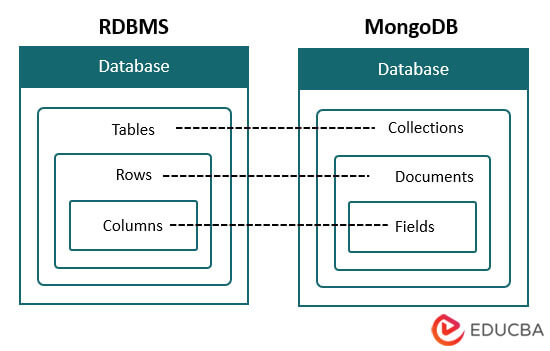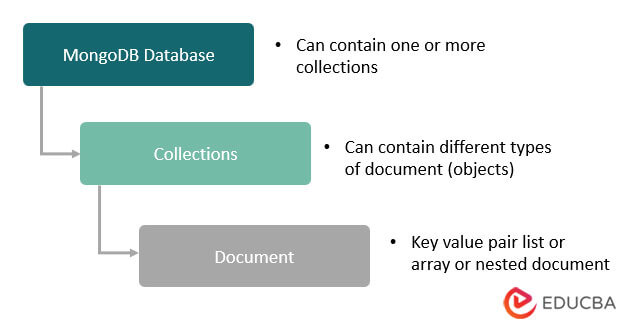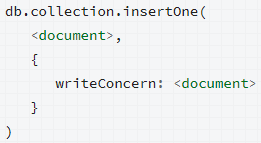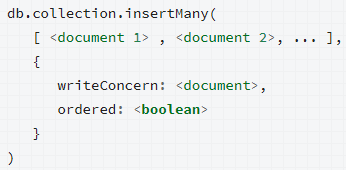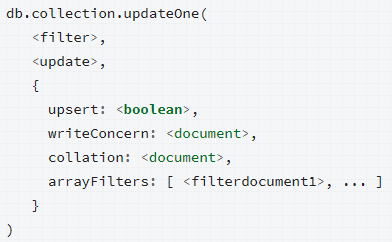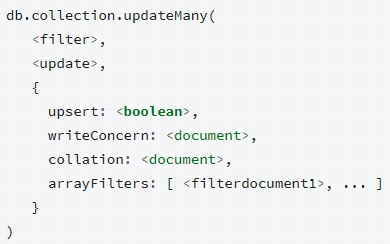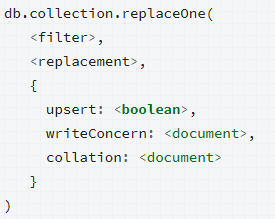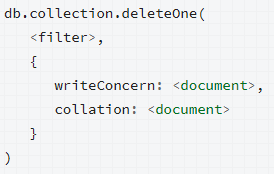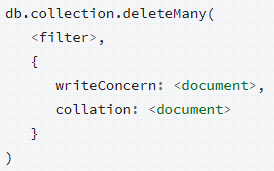Updated March 20, 2023
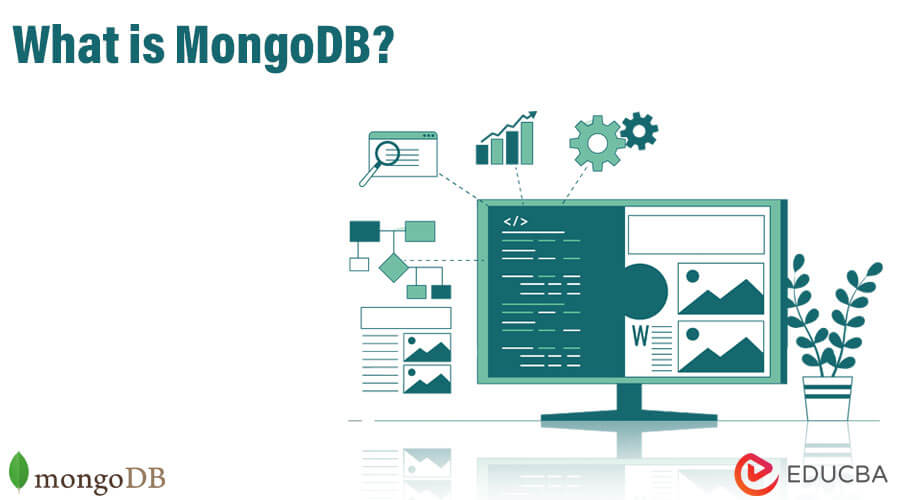
What is MongoDB?
MongoDB is an open-source NoSQL database designed for high performance, high availability, and easy scalability. The two primary terms/concepts used in MongoDB are collections and documents. Collections are groups of these documents, similar to tables in an RDBMS. It is a cross-platform, document-oriented NoSQL database that uses the BSON format for document storage and communication with its clients. BSON is a binary representation of JSON.
Mapping RDBMS to MongoDB
The following are the basic differences between RDBMS and MongoDB.
| Difference Between MongoDB and RDBMS | RDBMS | MongoDB |
| Schema | Fixed schema | Schema-less |
| Transactions | Supports transactions | Compromises on transactions by giving high availability and partitioning. |
| Sharding | No | Yes |
| Query Caching | No query caching here | Query caching happens here, which leads to faster access to data. |
Understanding
MongoDB works with an extended version of JSON known as BSON (Binary JSON), which is lightweight, traversable, and efficient. These drivers are responsible for sending and receiving data in BSON format, which stores the data as a BSON object. Encoding to BSON and decoding to BSON again happens quickly, making it efficient.
There are several terms related to MongoDB that are used while working with it, for example:
- Collection: A group of MongoDB documents that can be thought of as similar to a table in RDBMS like Oracle or MySQL. Collections do not enforce any structure, making schema-less MongoDB popular.
- Document: It refers to a record in a MongoDB collection,
Collection hierarchy
The picture above illustrates the concepts of collections and documents in MongoDB.
- Field: It is a name-value pair in a document. A document can have zero or more fields, which are like columns in relational databases.
How does MongoDB make working so easy?
- MongoDB uses a schema-less format for data storage and BSON format for communicating with its client. It manages and stores data innovatively, making it capable of handling heavy traffic flow for all websites and applications with ease.
- It uses the sharding concept and relies on vertical scaling, which involves adding more CPU and memory to meet increasing processing demands. Further, it is possible to use more than one server to fulfill the processing power requirements, and it follows the principles of a distributed system.
- MongoDB uses internal memory for storing working data sets, allowing faster access to the data. It optimizes the schema for the most frequent use cases.
- It provides a rich set of queries for performing fast and easy operations.
Various Subsets
MongoDB has various subsets that make it so versatile. These include:
- mongod: This is the core database process that handles all data requests, manages data access, and performs various background management operations.
- mongos: This is the controller and query router for sharded clusters. It is responsible for processing queries from the application layer and determining the location of the data in the sharded cluster to complete the task.
- mongo: This is an interactive JavaScript shell interface to MongoDB, through which administrators and developers interact with MongoDB to test queries and run operations.
What can one do with MongoDB?
MongoDB is a versatile technology that can be used to address numerous business problems. Here are some use cases that can inspire more ideas and thoughts, which one may find relevant to many scenarios and implement:
- Real-Time Analytics: The era of complex and time-consuming batch analytics has become outdated. MongoDB has brought latency to fractions of seconds and ensures high availability (99%). This is especially useful for apps and browsers.
- Product Catalogue: Its dynamic schema allows for keeping only relevant values per attribute instead of keeping all records in all attributes. This leads to a speedy and user-friendly experience when updating any record.
- Scalability and Dynamicity: With more development and research, companies need to store the various data coming from varying sources. Their environment needs to be flexible and progressive without any obstacles to growth, and MongoDB provides a great solution for such cases.
Working with MongoDB
Once the mongo shell starts, there will emerge a few important MongoDB commands that facilitate working with it:
1. To insert documents
- db.collection.insertOne()
- db.collection.insert many()
2. To retrieve a document from the collection
- db.collection.find()
3. To update the existing document in the collection
- db.collection.updateOne()
- db.collection.updateMany()
- db.collection.replaceOne()
4. Removal of document from collection
- db.collection.deleteOne()
- db.collection.deleteMany()
5. To authenticate a connection
6. Find distinct value in the collection
This returns a document that contains an array of distinct values.
7. Text search
This indexes the text when stored in a collection. The $text query operator performs text searches on a collection. For example, to find all documents containing the phrase “Politics issue,” this operator can be used.
Advantages
- Ease of Use: It is easy to install and set up, making it stand out from other document-based NoSQL databases. Additionally, one does not require a coding background, as a basic understanding of JSON is enough to understand the tree structure of the collection.
- No Complex Joins: MongoDB’s BSON format, which stores data in key-value pairs, eliminates the need for complex joins.
- Many Supported Platforms: It supports a wide variety of platforms, including Windows, Ubuntu, Debian, Solaris, and macOS, making it popular among developers.
- Agility: With constantly evolving requirements, a flexible data model is needed to address them. A fixed schema-based data model cannot address all such requirements, but MongoDB’s schema-less data model allows it to scale and be highly dynamic. It is also easy to add or change fields in MongoDB.
- Faster Access to Data: It uses the storage’s internal memory, which provides fast access to data.
- Horizontal Scaling: It relies on horizontal scaling, as opposed to vertical scaling in RDBMS. This reduces the cost of adding CPU and memory to the same server and allows for the use of multiple servers to handle increased processing requirements, reducing maintenance costs.
Required Skills
The following skills are required from a person specialized in MongoDB:
- Implementation of appropriate indexes (B-Tree, Geospatial, Text) for performance improvement.
- One should be aware of ways to optimally implement backup and recovery.
- The person should be able to develop the proof of concept around MongoDB and its APIs.
- One should also be able to detect performance problems using Mongo Profiler.
- It also required that the person is aware of the methodologies and potential limitations of MongoDB.
Why use MongoDB?
NoSQL is the need of the era. With rapid changes and huge scalability demand, NoSQL is the ultimate solution any organization can think of.
In today’s fast-paced world, NoSQL is becoming increasingly important due to the need for rapid changes and scalability. MongoDB is an excellent solution for any organization seeking to address these demands.
Below are some of the benefits of using MongoDB that can help you consider relevant use cases:
- Supports Heterogeneous data
- No joins
- Distributed in nature
- High performance, scalability, and availability
- Supports multiple platforms
- Document-based query language
- Very flexible in field addition/deletion due to its schemaless nature
Scope
MongoDB is becoming increasingly popular due to its high performance, scalability, and availability, making it a popular choice for many companies. To learn it, one simply needs to know JSON, which is a simple programming language. It is open source and thus accessible to many developers. As more companies adopt MongoDB, the demand for its skills in the job market is likely to increase.
Why do we need it?
Traditional ways of storing data in columns and rows often lead to wasted space. Modern enterprises require more flexibility and better customer service, and for this, they need to be ready to adapt to changes and meet expectations. NoSQL databases are the go-to choice for this reason, and MongoDB offers high performance, availability, and scalability, making it an excellent choice for managing data. Additionally, schema validation can be used to enforce data governance controls over each collection.
The right audience for learning MongoDB technologies
The audience that is suitable for learning MongoDB technologies includes various IT roles such as database administrators, analytics professionals such as data analysts and data scientists, software developers, infrastructure leads, architects, big data consultants, and research fellows. However, this list is not limited to these roles. Learning it will enable individuals in these roles to make better decisions and choices in their business operations.
How will this technology help in career growth?
MongoDB’s popularity has been rising due to its flexibility, speed, and powerful query language. With a vast amount and types of data, MongoDB is becoming the obvious choice for organizations. Some of the top companies using it include Cisco, SAP, Telefonica, EA, eBay, Ericsson, Forbes, Intuit, and LexisNexis.
Adopting NoSQL databases such as MongoDB over SQL databases is driving the market trend today, and hence there is a predicted increase in demand for MongoDB skills. Therefore, learning it can significantly boost career growth.
Conclusion
MongoDB has been adopted by numerous top companies and will continue to be integrated by others in the IT market. It is a powerful and prominent technology, and as more implementation and practical skills are required, more individuals are expected to gravitate towards this technology. With its ability to extract valuable insights from big data, learning MongoDB is a lucrative step that can lead to even more lucrative job opportunities in the near future.
Recommended Articles
Here are further related articles to the subject:
